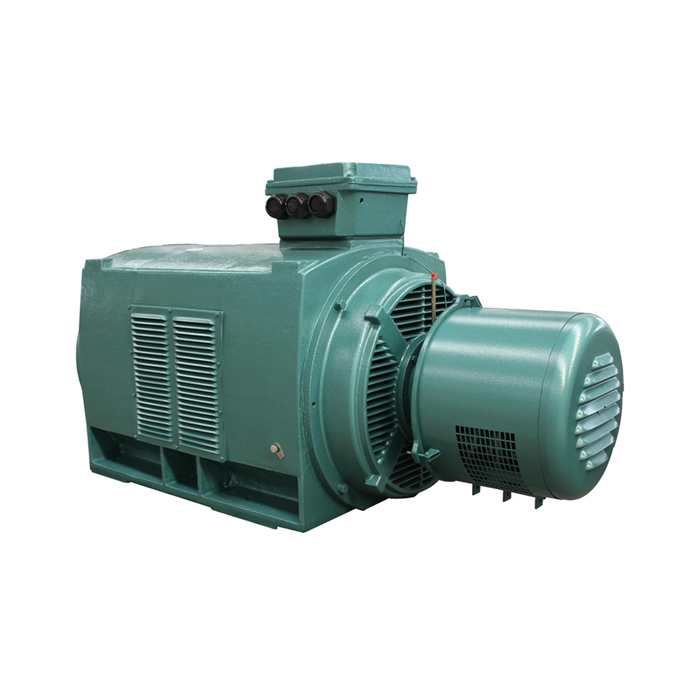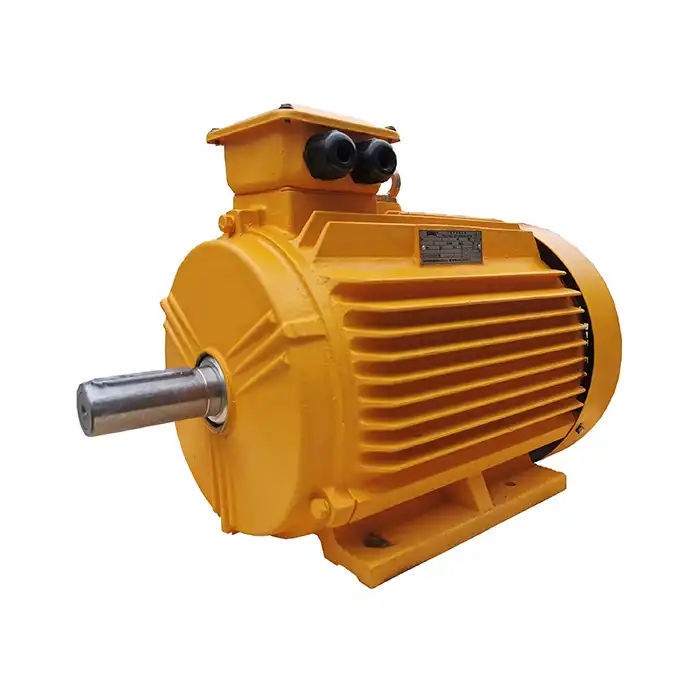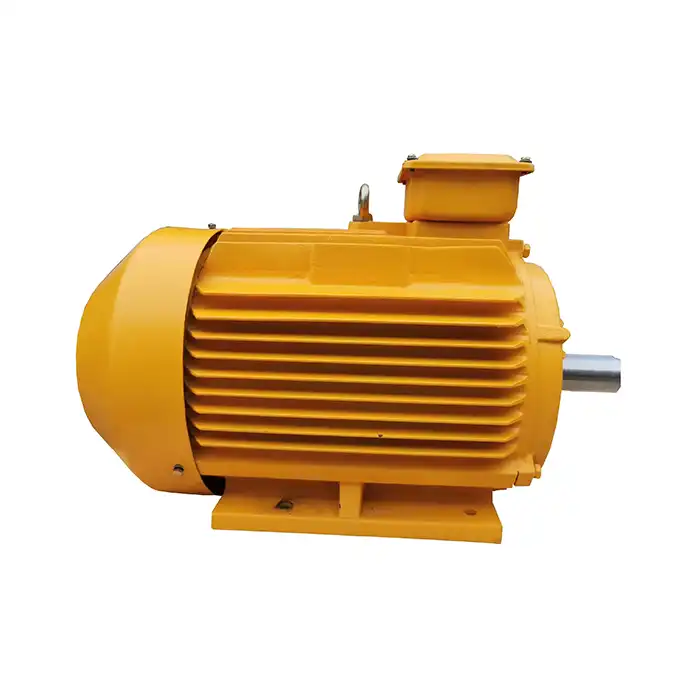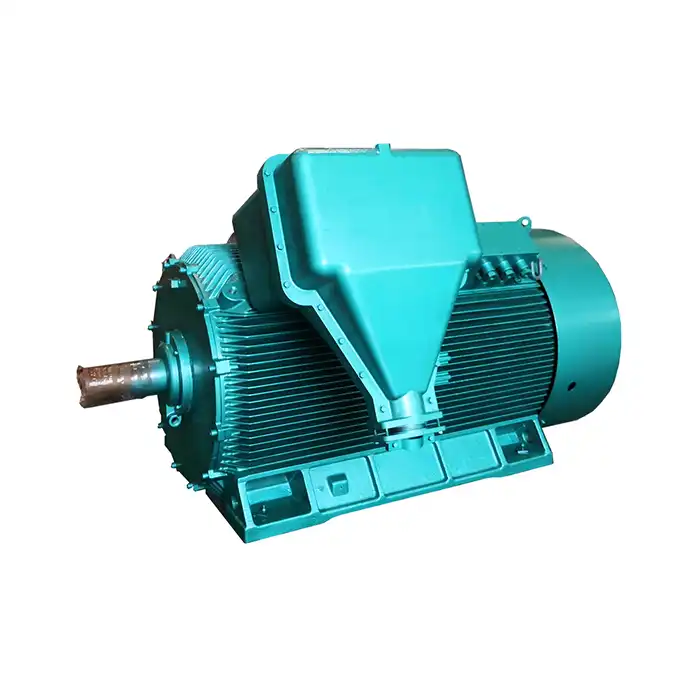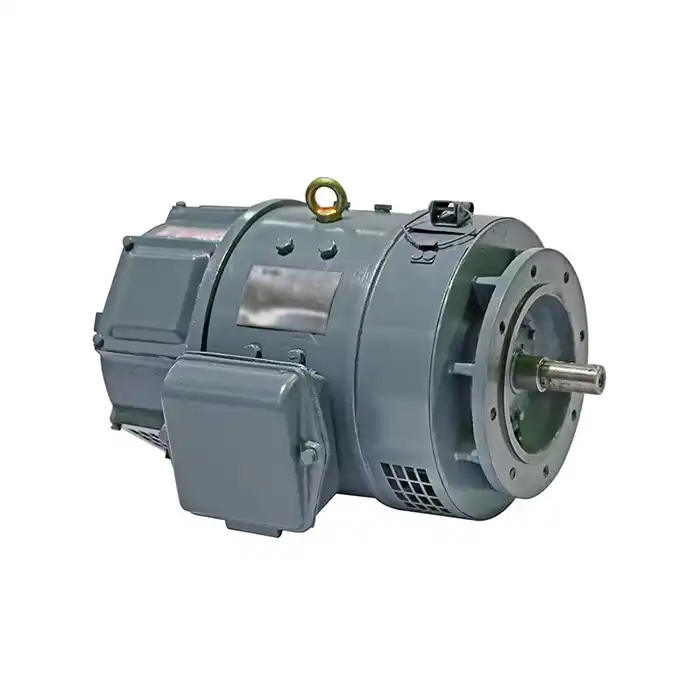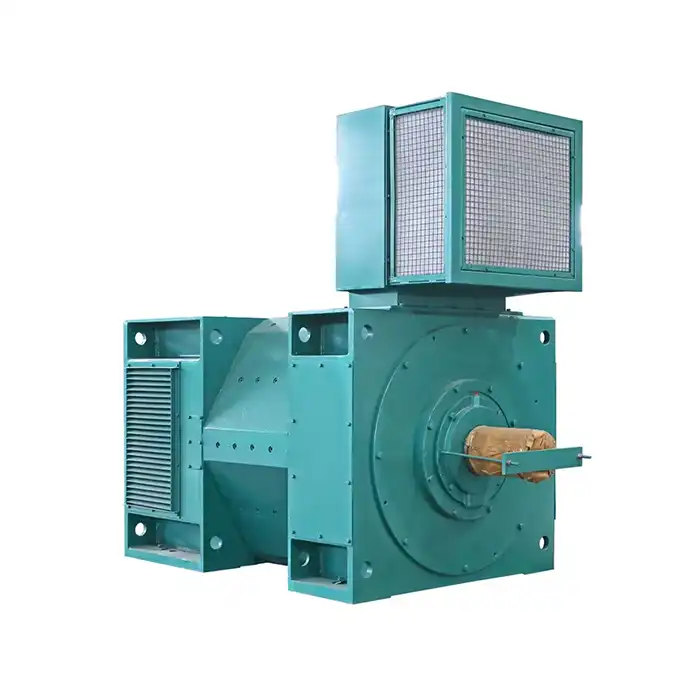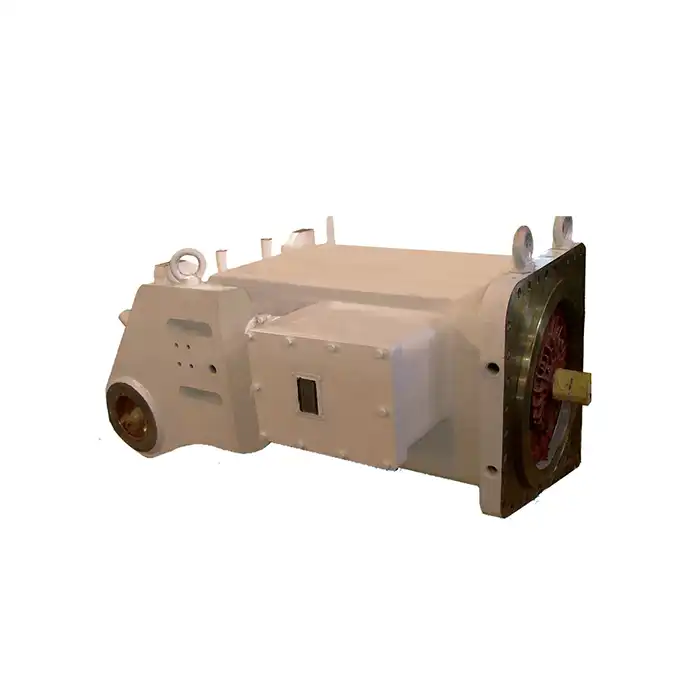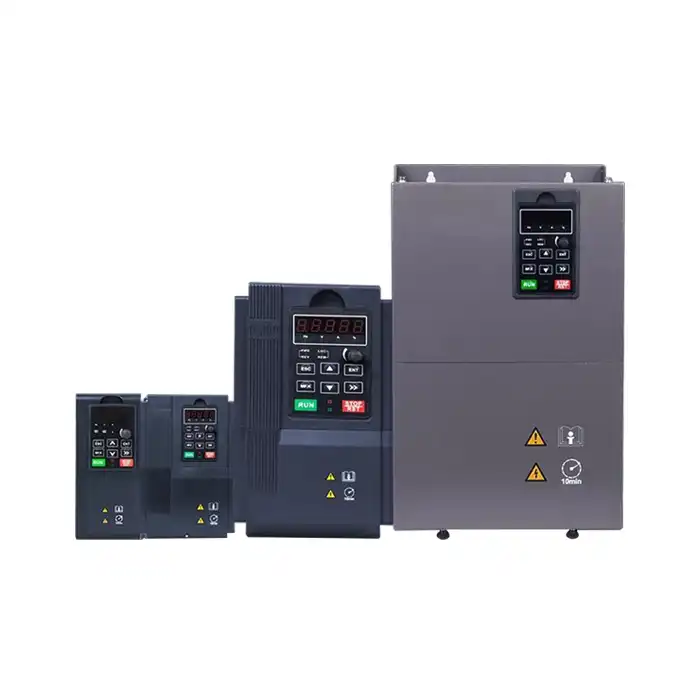How do you maintain an inverter duty motor?
Proper maintenance of inverter duty motors is crucial for ensuring their longevity, efficiency, and reliable performance. These specialized motors, designed to work with variable frequency drives (VFDs), require specific care to maintain their optimal functionality. In this comprehensive guide, we'll explore essential maintenance tasks, troubleshooting techniques, and preventive measures to keep your inverter duty motor running smoothly.

Series:YVFE2
Frequency conversion range:30hz~50hz,5hz~70hz,5hz~100hz
Power range:0.75-355kW
Protection level:IP55
Application:are suitable for driving various mechanical equipment that require continuous and frequent forward and reverse rotation, such as steel rolling, lifting, transportation, machine tools, printing and dyeing, papermaking, chemicals, textiles, pharmaceuticals, etc., and can be used with various domestic and foreign variable frequency power supplies.
Advantage:high efficiency, wide speed range, high precision, stable operation, and easy operation and maintenance.
Certificate:installation dimensions comply with International Electrotechnical Commission (IEC) standards.
Others: SKF, NSK, FAG bearings can be replaced according to customer requirements.
Essential maintenance tasks for longevity
Regular maintenance is key to extending the lifespan of your inverter duty motor. By following these essential tasks, you can prevent unexpected breakdowns and maintain peak performance:
Regular cleaning and inspection
Keeping your motor clean is fundamental to its proper functioning. Dust, dirt, and debris can accumulate on the motor's surface and inside its components, leading to overheating and reduced efficiency. Implement a regular cleaning schedule, using compressed air or a soft brush to remove buildup from the motor's exterior and ventilation openings.
Lubrication management
Proper lubrication is vital for reducing friction and wear on moving parts. Check the manufacturer's recommendations for lubrication intervals and types of lubricants to use. Be careful not to over-lubricate, as this can lead to bearing damage and increased energy consumption.
Voltage and current monitoring
Regularly monitor the voltage and current supplied to your inverter duty motor. Inconsistencies in these parameters can indicate potential issues with the motor or the VFD. Use a multimeter or power analyzer to take measurements and compare them to the motor's nameplate values.
Vibration analysis
Excessive vibration can be a sign of misalignment, imbalance, or bearing issues. Conduct periodic vibration analysis using specialized equipment to detect any abnormalities early on. This proactive approach can help prevent costly repairs and unexpected downtime.
Insulation resistance testing
Perform regular insulation resistance tests to assess the condition of the motor's winding insulation. This test helps identify potential insulation breakdowns before they lead to motor failure. Use a megohmmeter to measure the resistance between the motor windings and ground.
Troubleshooting common inverter motor issues
Despite proper maintenance, issues may still arise with your inverter duty motor. Being able to identify and address these problems quickly can minimize downtime and prevent further damage:
Overheating
Overheating is a common problem that can lead to premature motor failure. If you notice your motor running hot, check for:
Blocked ventilation openings
Incorrect VFD settings
Overloading
Inadequate cooling system
Address these issues promptly to prevent damage to the motor's windings and insulation.
Unusual noises
Strange sounds coming from your motor can indicate various problems. Common causes include:
Loose mounting bolts
Misaligned couplings
Worn bearings
Electrical issues
Investigate the source of the noise and take appropriate action to resolve the underlying issue.
Excessive vibration
While some vibration is normal, excessive shaking can lead to premature wear and failure. Possible causes of increased vibration include:
Unbalanced rotor
Misaligned shaft
Loose mounting
Bearing issues
Use vibration analysis tools to pinpoint the source and severity of the problem.
Reduced performance
If your inverter duty motor is not performing as expected, consider these potential causes:
Incorrect VFD settings
Power supply issues
Motor overloading
Worn components
Review your motor's operating parameters and consult with a professional if necessary to restore optimal performance.
Preventing Bearing Currents and Electrical Erosion
One of the unique challenges faced by inverter duty motors is the risk of bearing currents and electrical erosion. These phenomena can significantly reduce the lifespan of your motor if not properly addressed:
Understanding bearing currents
Bearing currents occur when voltage builds up on the motor shaft and discharges through the bearings. This can cause pitting and fluting of the bearing races, leading to premature failure. Inverter duty motors are particularly susceptible to this issue due to the high-frequency switching of the VFD.
Implementing shaft grounding
One effective method for preventing bearing currents is to install a shaft grounding system. This provides a low-resistance path for the current to flow back to the motor frame, bypassing the bearings. There are several types of shaft grounding devices available, including:
Carbon brush systems
Conductive microfiber rings
Bearing isolation systems
Choose the most appropriate solution based on your motor's size, application, and operating conditions.
Proper cable management
Proper cable management is crucial for minimizing electrical noise and reducing the risk of bearing currents. Consider these best practices:
Use shielded cables between the VFD and motor
Keep motor cables separated from control and power cables
Ensure proper grounding of cable shields
Minimize cable length when possible
Regular bearing inspection
Even with preventive measures in place, it's important to regularly inspect your motor's bearings for signs of electrical erosion. Look for:
Fluting patterns on bearing races
Pitting or frosting on bearing surfaces
Unusual bearing noise or vibration
If you detect any of these signs, consider replacing the bearings and reviewing your current prevention strategies.
Conclusion
Maintaining an inverter duty motor requires a proactive approach and attention to detail. By following the essential maintenance tasks, troubleshooting common issues, and implementing measures to prevent bearing currents and electrical erosion, you can significantly extend the life of your motor and ensure its reliable operation.
Regular cleaning, lubrication management, and monitoring of key parameters such as voltage, current, and vibration are crucial for keeping your motor in top condition. When problems do arise, prompt identification and resolution of issues like overheating, unusual noises, and reduced performance can prevent more serious damage.
Addressing the unique challenges faced by inverter duty motors, such as bearing currents, requires specific preventive measures like shaft grounding systems and proper cable management. By implementing these strategies and maintaining vigilance through regular inspections, you can protect your investment and maximize the efficiency of your motor-driven systems.
Remember, proper maintenance is not just about preventing breakdowns; it's about optimizing performance, reducing energy consumption, and ultimately improving your bottom line. By partnering with a reputable manufacturer like XCMOTOR and following these maintenance guidelines, you can ensure that your inverter duty motors continue to drive your operations reliably for years to come.
FAQ
1. How often should I perform maintenance on my inverter duty motor?
The frequency of maintenance depends on factors such as operating conditions, environment, and motor usage. Generally, a thorough inspection and basic maintenance should be performed at least every 6 months, with more frequent checks for motors in demanding applications.
2. Can I use a standard motor with a VFD instead of an inverter duty motor?
While it's possible to use a standard motor with a VFD, inverter duty motors are specifically designed to handle the stresses of variable frequency operation. They typically have better insulation systems and are built to withstand the additional heat generated by harmonic currents.
3. How can I improve the efficiency of my inverter duty motor?
To improve efficiency, ensure proper sizing of the motor for the application, optimize VFD settings, maintain proper alignment and lubrication, and consider using high-efficiency bearings. Regular maintenance and prompt addressing of any issues will also contribute to improved efficiency.
Choose XCMOTOR for Your Inverter Duty Motor Needs
When it comes to reliable and efficient inverter duty motors, XCMOTOR stands out as a leading manufacturer. Our motors are engineered to deliver exceptional performance and longevity, even in the most demanding applications. With our extensive experience in power equipment solutions, we provide not only top-quality products but also comprehensive support to ensure your motors operate at peak efficiency.
Our team of experts is always ready to assist you with technical advice, maintenance tips, and troubleshooting support. By choosing XCMOTOR, you're partnering with a company committed to your success and operational excellence. For more information about our inverter duty motor offerings or to discuss your specific needs, don't hesitate to reach out to us at xcmotors@163.com. Let us help you power your operations with confidence and reliability.
References
Johnson, M. (2022). "Inverter Duty Motor Maintenance: Best Practices for Longevity." Industrial Maintenance Quarterly, 45(2), 78-92.
Smith, R., & Brown, T. (2021). "Troubleshooting Guide for Variable Frequency Drive Systems." IEEE Transactions on Industry Applications, 57(4), 3210-3225.
Lee, S., et al. (2023). "Prevention of Bearing Currents in Inverter-Fed Motors: A Comprehensive Review." Journal of Electrical Engineering, 68(3), 145-160.
Garcia, A. (2020). "Energy Efficiency Optimization in Inverter Duty Motor Applications." Energy and Power Engineering, 12(8), 456-470.
Wilson, D., & Taylor, E. (2022). "Predictive Maintenance Strategies for Industrial Motors." Reliability Engineering & System Safety, 217, 108090.
Chen, Y. (2021). "Advancements in Insulation Systems for Inverter Duty Motors." IEEE Electrical Insulation Magazine, 37(5), 7-15.



